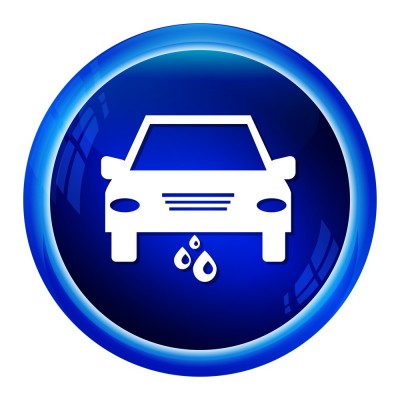What is Leaking Out of Your Car? 5 Fluids to Consider
Our cars contain a wide range of different fluids, to cool your engine, keep your transmission operating properly and keeping both your brakes and power steering working right.
This scenario has happened to almost anyone who has ever owned a car: You back up out of a garage or parking spot and all of a sudden and discover that some fluid has leaked out of your vehicle. Our first question is always the same--what is this and where did it come from? And more importantly--how will this affect my car?
Well, fear not--because at Hendrick Collision Center Durham, we know that there are five basic fluids that are most likely to end up on your driveway, and here are some easy ways to quickly and recognize them. Please note, we did not include water on this list, because even non-technical people can easily distinguish good old H2O from these five fluids.
1.) Engine Oil: It’s one of the most frequent substances to leak from a vehicle and that's why we often see puddles of oil on the roads in Durham, NC literally every day. In most cases, cars will leak a little oil here and there, especially if your car is more than 10-15 years old. So, a tiny amount is likely not anything serious, because engine oil can easily seep out. But it’s probably a smart idea to track down the origin right away before a small leak becomes a larger one. Engine oil will normally look between light brown all the way to black.
2.) Transmission Fluid: Sometimes transmission fluid can look similar to engine oil, but is thicker and usually found near the middle of the car's engine compartment, although a lot of other transmissions today have a reddish fluid that’s considerably thinner than oil. This fluid could come from a failing transmission seal or gasket, but this is a serious issue--so address it right away. Transmission fluids customarily look reddish to brown, depending on its viscosity.
3.) Power Steering Fluid: Most power steering systems likely use a fluid that’s either identical or very similar to your vehicle's transmission fluid. So how do you know the difference? Well, first look at where the spots are under your car. If they’re around the center of the vehicle, the transmission is almost certainly the offender. If the leaks are more close to the front of your car, your power steering is likely the one to blame.
4.) Brake Fluid: Like transmission fluids, brake fluids are also extremely important, because both brakes and transmissions aren't cheap to fix or replace. New brake fluid is almost completely clear, but over time it will turn brown. The key thing to be looking out for is its slickness and that's how you will likely be able to know that it is brake fluid and not engine oil, for example.
5.) Coolant: This is the easiest fluid to pinpoint, because it is brightly colored and has a unique smell. Older automobiles will sometimes blow off a little coolant naturally when their engines heat up, so if you own an older car, a little drip or two of coolant is probably just a reminder for you to add more. If you own a more modern vehicle (10 years or less) that seeing spots of coolant either on your engine or on the ground should be a concern. Coolant is usually either green or blue in color.
Sources: Car Talk, DIY News and AOL







Social